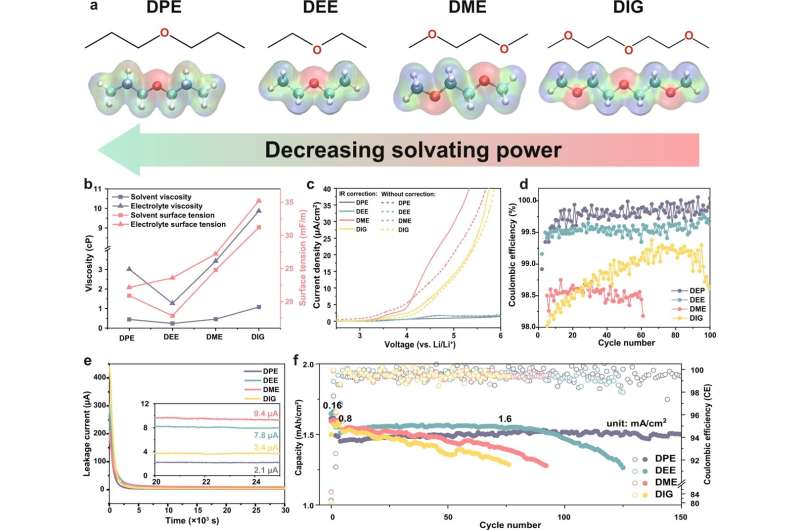Group develops framework for high-energy-density, long life-cycle rechargeable lithium metal batteries

Research conducted by Purdue University’s Vilas Pol Energy Research (ViPER) Group shows promise for developing high-energy-density rechargeable lithium-metal batteries and addressing the electrochemical oxidation instability of ether-based electrolytes.
The research was published in the Feb. 10 issue of Nature Communications. Zheng Li, a graduate research assistant in the Davidson School of Chemical Engineering, was the lead author.
The focus of the ViPER Group is the design and fabrication of high-capacity materials for next generation safer lithium-ion, lithium-sulfur, sodium-ion, solid-state and ultralow temperature battery systems.
“The rapid growth of energy storage technologies aimed at reducing proposed carbon emission targets, and huge demands of energy storage systems also exist in the consumer electronic and electric vehicle markets. They call for next-generation Li batteries with higher energy density with enhanced safety,” says Vilas Pol, a professor of chemical engineering who has led Purdue’s premier laboratories for battery fabrication, electrochemical and thermal safety testing since 2014.
Replacing the conventional graphite anode material with high-energy lithium metal is a very promising approach. However, this “holy grail” anode material suffers from challenging drawbacks of low cyclability and safety, etc.
“From the perspective of fundamental research on new LMB technologies, it is critical to meticulously develop suitable liquid electrolyte chemistry that works with promising anodes and cathodes,” Pol said.
In their study, the researchers demonstrated that low concentration ether-based electrolyte can successfully endure the long-term high voltage (4.3 V) operation of practical LMB under industry viable configurations, when using the highly nonpolar dipropyl ether as the electrolyte solvent.
“Realizing the long-term cycling of Li metal anode and high-voltage cathode simultaneously with dilute ether-based electrolyte is the main challenge in this study,” Li said. “Ethers have poor oxidation stability despite their reasonable compatibilities to the Li metal anode. It was thus our target to extend their high-voltage capabilities. From the molecular level, we confirmed the essential correlations between the solvation behaviors of dilute ether-based electrolytes and their performance on high-voltage positive electrode.”
The correlations were further interpreted via detailed classical molecular dynamics (MD) simulations and density functional theory (DFT) calculations coupled with multimodal experimental analyses. It was demonstrated that regulating the solvation structure of ether-based electrolytes can rearrange the degradation order of solvation species and selectively form a robust protection on the cathode surface. It also adjusts the composition of surficial electric double layer to prevent the ether oxidation.
This unique kinetic-suppression approach differs from the conventional strategies such as using ultra-high concentration electrolyte or introducing molecular fluorination to improve the electrolyte stability, which dramatically increase the battery cost. The developed LMB by the ViPER group is expected to improve 40% of energy density, compared to the conventional Li-ion batteries.
More information:
Zheng Li et al, Non-polar ether-based electrolyte solutions for stable high-voltage non-aqueous lithium metal batteries, Nature Communications (2023). DOI: 10.1038/s41467-023-36647-1
Citation:
Group develops framework for high-energy-density, long life-cycle rechargeable lithium metal batteries (2023, March 21)
retrieved 22 March 2023
from https://techxplore.com/news/2023-03-group-framework-high-energy-density-life-cycle-rechargeable.html
This document is subject to copyright. Apart from any fair dealing for the purpose of private study or research, no
part may be reproduced without the written permission. The content is provided for information purposes only.
For all the latest Technology News Click Here
For the latest news and updates, follow us on Google News.

